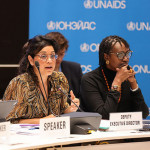Sweden appears to be the first nation to have achieved the Joint United Nations Programme on HIV/AIDS’s (UNAIDS) so-called 90-90-90 targets for HIV diagnosis, treatment and viral suppression rates, aidsmap reports.
In 2014, UNAIDS called for nations to get 90 percent of their HIV population diagnosed, 90 percent of that group on antiretroviral (ARV) treatment and 90 percent of that group virally suppressed by 2020. (This means that out of all people living with the virus, 90 percent would know their status, 81 percent would be on ARVs and 73 percent would have a fully suppressed virus.) UNAIDS believes that achieving these targets is key to ending HIV as an epidemic by 2030.
A recent report found that there is in fact only a remote chance of ending the global epidemic that soon.
On the bright side, Sweden is leading the way, providing a proof of concept that the targets can be attainable.
Swedish researchers relied on national surveillance data from the Public Health Agency of Sweden and data from the Swedish InfCare HIV Cohort Study to determine that an estimated 90 percent of those living with HIV in the country had been diagnosed. The latter study’s database included 6,946 people in care for the virus.
Reviewing all HIV diagnoses reported in 2014, the researchers found that 469 of the 471 cases were linked to care for the virus, for a linkage rate of 99.8 percent.
After reviewing the cases of 661 people who started care for the virus in 2013 and 2014, the investigators found that 612 of them were still in care at the end of 2015. After excluding individuals who had moved out of the country or died, the researchers calculated a retention rate of 97 percent.
Ninety-five percent (6,605 of 6,946) of those in the InfCare study were on ARVs at the end of 2015. Of those taking ARVs for more than six months, 95 percent had a viral load below 50, and 98 percent had a viral load below 200.
In sum, out of all people living with HIV in Sweden, an estimated 90 percent were diagnosed, 83 percent were on ARVs and 78 percent had a fully suppressed viral load—compared with the 90-81-73 translation of the UNAIDS targets when using the national HIV population as the denominator for all three points.
To read the aidsmap article, click here.
To read the study abstract, click here.







Comments
Comments